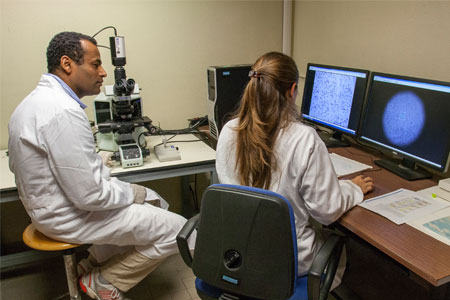Waterborn transmission is a highly effective means for spreading infectious agents to a large portion of the population. It is much more convincing the hypothesis that medically important bacteria may persist in the natural environments longer than previously estimated. This is essentially due to the fact that bacteria can activate survival strategies when exposed to environmental stresses (Kjelleberg et al, 1993; Moriarty and Bell, 1993). The viable but nonculturable state (VBNC) is considered one of these survival mechanisms developed by bacteria when they faced with low-nutrient concentration, extreme temperature, high salinity (Roszak and Colwell, 1987; Oliver, 1993; Barer and Harwood, 1999). When in this state, bacteria are no longer able to grow and form colonies on conventional culture media, but demonstrate metabolic activities, maintain their pathogenicity and, in some cases, may return to active growth and division, by a process called resuscitation, when optimal condition are restored (Raham et al., 1994; Oliver and Bockian, 1995; Jians and Chai, 1996; Lleò et al., 1998; Mizunoe et al., 1999). Consequently, standard methods, based on plate counts, may no longer be adeguate in that they are unable to detect bacteria in the nonculturable state and need to be replaced by other techniques with such a capability. Some of these methods [polymerase chain reaction (PCR), fluorescent monoclonal antibodies, specific DNA probes] have now been shown to be valid when applied to detection of VBNC bacteria in different environments (Brauns et al., 1991; Islam et al, 1993). We have already demonstrated the possibility of detecting, by PCR, the presence of Enterococcus faecalis in water samples from Garda lake (Verona, Italy) resulting negatives when examined with the standard culture methods (Lleò et al., 1999). We have also described a quantitative methods consisting of a co-aplifycation of an Internal Standard that allow the precise enumeration of enterococcal cells and have validated the method in environmental samples (Lleò et al., 1999). For these PCR-based methods we choose, as an amplification target, the gene encoding for the penicillin-binding protein 5 (PBP5) which was previously shown to be species-specific (Signoretto et al, 1994; Robbi et al, 1996). PCR and cPCR, even if very useful for bacterial detection in environments, are limited methods in that they are unable to discriminate between live and dead cells (Josephson et al, 1993). The presence in the cell of an mRNA, bacause of its short half-life, is considered a valid indication of cell viability. Studies with this goal have been, up to now, conducted on Vibrio cholerae, Listeria monocytogenes, Mycobacterium leprae and Escherichia coli (Bej et al., 1996; Klein and Juneja, 1997; Patel et al., 1993; Sheridan et al., 1998). No data, however, have been reported about bacteria in the VBNC state. Recently we have shown important cell wall modifications connected with the entry into the VBNC state of E. faecalis (Signoretto et al., 2000). These modifications were especially seen in the peptidoglycan and in the enzymes involved in its metabolism. PBP5 was shown to play an important role in this context, thus it could represent a good candidate to be used as a marker for gene expression during the VBNC state of E. faecalis. Upon these results will be confirmed, the pbp5 mRNA will be used to prepare a diagnostic kit for the detection of E. faecalis also when in the VBNC state.







